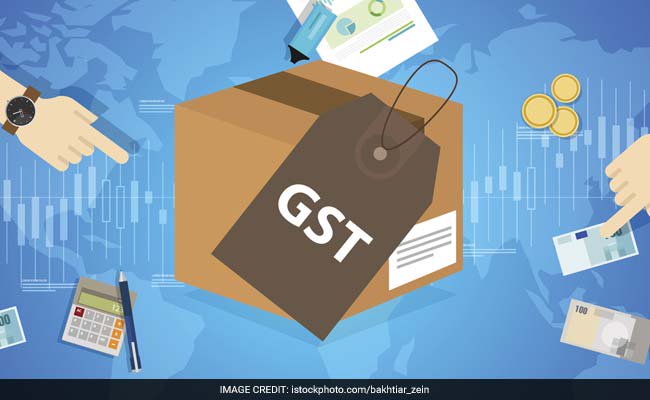Table of Contents
The Union Government, in 2017, introduced the Goods and Services Tax (GST) to make indirect taxation seamless and convenient. Under the old indirect tax regime, a multitude of taxes, like value-added tax (VAT) and excise duty were applicable to goods and services.
Since 2017, the tax base for levying GST has been expanded to include almost all goods and services, except for alcoholic beverages and petroleum products.
As MSMEs are major players in the Indian economy, contributing 29% of the GDP, they were significantly impacted by GST being introduced. Read on to know exactly how GST slab rates impact small businesses in India.

Positive Impact of GST Slab Rates on Small Businesses
Every policy initiative impacts the targeted sector in positive as well as negative ways. Here are examples of how GST slab rates have impacted small businesses in a positive manner:
Ease of Starting a Business
The GST regime was introduced with the aim to eliminate red-tapeism and streamline the taxation system. Earlier, businesses operating in multiple states had to register in different states’ tax departments. This is because VAT and some other taxes were state-level taxes.
To register in different states, businesses had to follow multiple procedures and pay fees at multiple points.
Under the GST regime, a uniform indirect taxation system was introduced to streamline the tax rules across the country. Now, all businesses need to do is register on an online portal to start their business.
Simplistic System and Filing
Under the old tax regime, there were multiple taxes at the Central and State levels. While the former included excise duty, customs duty, service, tax, etc., the latter consisted of VAT, luxury tax, purchase tax, etc.
Commodities were taxed at every stage of production under the old system. Hence, there was a cascading effect of taxation. GST slab rates were introduced to eliminate this system of ‘tax on tax’.
Moreover, the GST filing is also made simple through technology as you can do it online through the GSTN portal. The introduction of GST slab rates also removed a multitude of tax authorities and parties that businesses had to deal with.
Reduced Logistical Costs
Under the previous system, small businesses had to bear huge logistical costs. Due to long queues at inter-state entry points, vehicles had to stand idle on roads for a long time. This added costs of labour and fuel, making the transportation of goods more expensive.
Under the GST slab rates, IGST is applicable to inter-state trading of goods. It is composed of both the Central and States’ share of taxes. This has helped in reducing the cost of transportation as it makes state boundaries less significant.
Absence of Distinction Between Goods and Services
Earlier, businesses that provided both goods and services had to compute VAT and services taxes for each, respectively. The GST slab rates have removed this distinction as the tax is now calculated for the final product or service.
This has helped small businesses dealing in both goods and services get the benefit of tax incentives on payments. Moreover, as GST slab rates have eliminated multiple taxes, it has also made invoicing simpler.
Higher Threshold Limit for New Businesses
Before the GST slab rates were introduced, small businesses had to register for VAT. Businesses with annual turnovers of ₹5 Lakhs to ₹10 Lakhs had to register for this tax depending on the state.
However, the GST rules have set a higher threshold limit for new businesses. Businesses with turnovers of less than ₹20 Lakhs do not have to register under GST. This has relieved many smaller businesses from tax burdens.
For instance, many smaller restaurants have benefitted from the higher threshold as the GST rate on restaurant services is not applicable.
Negative Impact of GST Slab Rates on Small Businesses
The following are some of the negative impacts that small businesses had to face with the GST slab rates.
Technical Difficulties
GST has introduced an online system for the registration and filing of taxes. However, many small businesses in India still lack basic technical know-how for these activities. So, many micro-level businesses have to outsource these services.
Working Capital Blockade
Since the introduction of GST slab rates, the government has delayed paying the tax refunds to exporters on exporting goods multiple times. This has impacted the cash flow of many smaller businesses, forcing them to take business loans to maintain their cash reserve.
Monthly Return Filing
As against the older tax regime, GST rules require you to file returns every month. This costs small businesses as they have to outsource these services. Moreover, it takes considerable time to work through their accounts every month.
Until they have filed the GST returns, businesses cannot claim tax refunds and their customer cannot claim tax credit.
In addition, if they fail to file their GST returns on time, businesses will be penalized ₹100 per day. Their compliance rating will also fall on the GSTN portal if they fail to file GSTR on time.
Conclusion
In conclusion, GST has impacted small and medium businesses in many ways. While the GST slab rates have benefitted them, the tax system has some drawbacks as well.
Overall, it has simplified taxation and filing for small businesses. However, the government still needs to make amendments to the CGST and CGST Acts to make the system more convenient for smaller businesses.



